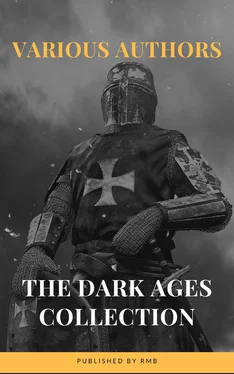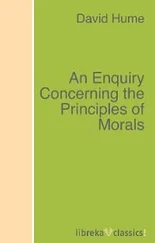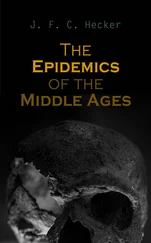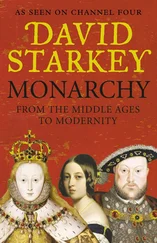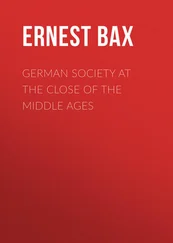The anarchy of the third century, when it almost seemed that the days of the Roman Empire were numbered, had displayed the defects of the irregular and heterogeneous system of government which Augustus had established to administer his immense dominion. His successors had introduced modifications and improvements here and there, but events made it clearer and clearer that a new system, more centralised and more uniform, was required, if the Empire was to be held together. To Diocletian, who rescued the Roman world at the brink of the abyss, belongs the credit of having framed a new system of administrative machinery. Constantine developed and completed the work of Diocletian by measures which were more radical and more far-reaching. The foundation of Constantinople as a second Rome inaugurated a permanent division between the Eastern and Western, the Greek and the Latin, halves of the Empire — a division to which events had already pointed — and affected decisively the whole subsequent history of Europe. Still more evidently and notoriously did Constantine mould the future by accepting Christianity as the State religion.
In the present work the history of the Roman Empire is taken up at a point about sixty years after Constantine’s death, when the fundamental changes which he introduced have been firmly established and their consequences have emerged into full evidence. The new system of government has been elaborated in detail, and the Christian Church has become so strong that no enemies could prevail against it. Constantinople, created in the likeness of Rome, has become her peer and will soon be fully equipped for the great rôle which she is to play in Europe and Hither Asia for more than a thousand years. She definitely assumes now her historical position. For after the death of Theodosius the Great, who had ruled alone for a short time over a dominion extending from Scotland to Mesopotamia, the division of the Empire into two geographical portions, an eastern and a western, under two Emperors, a division which had been common during the past century, was finally established. This dual system lasted for eighty-five years, and but for the dismemberment of the western provinces by the Germans might have lasted indefinitely. In the constitutional unity of the Empire this arrangement caused no breach.
Again, the death of Theodosius marks the point at which the German danger, long imminent over the Empire, begins to move rapidly towards its culmination. We are on the eve of the great dismemberment of Roman dominion which, within seventy years, converted the western provinces into Teutonic kingdoms. The fourth century had witnessed the settlement of German peoples, as foederati , bound to military service, on Roman lands in the Balkan peninsula and in Gaul. Through the policy of Constantine Germans had become a predominant element in the Roman army, and German officers had risen to the highest military posts and had exercised commanding political influence. Outside, German peoples were pressing on the frontiers, waiting for opportunities to grasp at a share of the coveted wealth of the Roman world. The Empire was exposed to the double danger of losing provinces to these unwelcome claimants who desired to be taken within its border, and of the growing ascendancy of the German element in the army. 1The East was menaced as well as the West, and the great outstanding fact in the history of the fifth century is that the East survived and the West succumbed. The success of the Eastern government in steering through these perils was partly due to the fact that during this critical time it was on good terms, only seldom and briefly interrupted, with Persia, its formidable neighbour.
The diminished Roman Empire, now centering entirely in Constantinople, lasted for a thousand years, surrounded by enemies and frequently engaged in a struggle for life or death, but for the greater part of that long period the most powerful State in Europe. Its history is marked by distinct ages of expansion, decline, and resuscitation, which are easily remembered and help to simplify the long series of the annals of Byzantium. 2Having maintained itself in the fifth century and won its way through the German peril, it found itself strong enough in the sixth to take the offensive and to recover Africa and Italy. Overstrain led to a decline, of which Persia took advantage, and when this danger had been overcome, the Saracens appeared as a new and more formidable force and deprived the Empire of important provinces in Asia, while at the same time European territory was lost to the Bulgarians and the Slavs (seventh century). Then a period of resuscitation in the eighth and ninth centuries led to a new age of brilliance and expansion (ninth to eleventh centuries). When the Saracens had ceased to be formidable, the Seljuk Turks appeared, and the Empire found it difficult to hold its own against this foe as well as against the western powers of Europe, and the barbarians of the north. This period ends with the disaster of 1204, when Constantinople fell into the hands of the Crusaders, who treated the city with more barbarity than the barbarian Alaric had treated Rome eight hundred years before. After this the cycle begins anew; first, the period of revival at Nicaea, which became the temporary capital; then the recovery of Constantinople (1261), followed by a period in which the Empire could assert its power; finally, from the middle of the fourteenth century, the decline, and the last death-struggle with the Ottomans, ending in the capture of the city in 1453.
The State which maintained itself in unbroken continuity throughout the vicissitudes of more than a thousand years is proverbial for its conservative spirit. It was conservative in its constitution and institutions, in the principles and the fashions of its civilisation, in its religion, in its political and social machinery. It may be conjectured that this conservatism is partly to be attributed to the influence of the legal profession. 3Lawyers are always conservative and suspicious of change, and it would be difficult to exaggerate their importance and the power of their opinion in the later Empire. It was natural and just that their influence should be great, for it has well been observed that it was to the existence of a “judicial establishment, guided by a published code, and controlled by a body of lawyers educated in public schools, that the subjects of the Empire were chiefly indebted for the superiority in civilisation which they retained over the rest of the world.” 4But the conservatism of Byzantium is often represented as more rigid than it actually was. The State could not have survived if it had not been constantly adapting its institutions to new circumstances. We have seen how its external history may be divided into periods. But its administrative organisation, its literature, its art display equally well-defined stages.
One more introductory remark. The civilisation of the later Empire, which we know under the name of Byzantine, had its roots deep in the past. It was simply the last phase of Hellenic culture. Alexandria, the chief city of the Hellenic world since the third century B.C., yielded the first place to Byzantium in the course of the fifth century. There was no breach in continuity; there was only a change of centre. And while the gradual ascendancy of Christianity distinguished and stamped the last phase, we must remember that Christian theology had been elaborated by the Greek mind into a system of metaphysics which Paul, the founder of the theology, would not have recognised, and which no longer seemed an alien product.
§ 1. The Autocracy
The Roman Empire was founded by Augustus, but for three centuries after its foundation the State was constitutionally a republic. The government was shared between the Emperor and the Senate; the Emperor, whose constitutional position was expressed by the title Princeps was limited by the rights of the Senate. Hence it has been found convenient to distinguish this period as the Principate or the Dyarchy. From the very beginning the Princeps was the predominant partner, and the constitutional history of the Principate turns on his gradual and steady usurpation of nearly all the functions of government which Augustus had attributed to the Senate. The republican disguise fell away completely before the end of the third century. Aurelian adopted external fashions which marked a king, not a citizen; and Diocletian and Constantine definitely transformed the State from a republic to an autocracy. This change, accompanied by corresponding radical reforms, was, from a purely constitutional point of view, as great a break with the past as the change wrought by Augustus, and the transition was as smooth. Augustus preserved continuity with the past by maintaining republican forms; while Constantine and his predecessors simply established on a new footing the supreme Imperial power which already existed in fact, discarding the republican mask which had worn too thin.
Читать дальше
